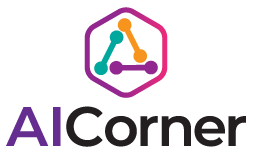One of the industries, that has experienced an astonishing technological revolution in recent years is agriculture; where Artificial intelligence (AI) emerged as a game-changing technology. With a rising world population and ever more challenging climate scenarios, practical farming methods are at their most crucial. With its ability to enhance crop outputs and better manage resources, AI is now considered a game-changer in agriculture which could open the doors for smart farming.
Precision Agriculture: The Foundation of AI-Driven Farming
Precision farming is a concept around which much of the application of AI in agriculture revolves. It leverages satellite, drone, and IoT sensor data as well as weather stations to enable such educated decisions around crop management. Utilizing AI, these algorithms process massive amounts of this data to provide farmers with actionable context on whether or not they should irrigate that field and exactly how many gallons it needs… the same for fertilization and pest control.
Crop Monitoring and Health Assessment
Crop Monitoring and Health assessment is the top-notch application of AI over Agriculture. For example, satellites and drones can provide an early warning of upcoming crop stress (due to climate conditions or pests) simply by implementing machine learning algorithms. Farmers can take action to prevent such stages, thus preventing the lost crops.
For example, computer vision methods like change may suggest a nutrient deficit or disease. In the process, AI informs farmers about these issues early on so crop losses are minimized and reliance on broad-spectrum pesticides is reduced resulting in more sustainable farming practices.
Precision Irrigation
The shadow of water scarcity looms over much of the world, making efficient irrigation a very important aspect of ensuring sustainable agriculture. An AI that is plugged in can use this to determine soil moisture levels, and weather forecasts and make informed decisions on crop water requirements. The systems can tell when and how much water to irrigate, providing crops with exact amounts of necessary irrigation.
Even localized microclimates within a field are considered by advanced AI irrigation systems — so much smarter! Providing this level of precision also helps save water, and contributes to healthier plant growth & increased yields.
Predictive Analytics for Crop Yield Optimization
Machine Learning & crop yield forecasting etc with AI Better than the best now! These platforms use machine learning to predict future yields with more accuracy by observing historical data on weather patterns, crop performance, and soil conditions. Such information enables farmers to select the best crop, decide when to plant, and how many resources to invest in a given field.
Additionally, AI can replicate multiple situations to enable farmers a virtual testbed for what could work and which approach they must undertake before practically investing. A farmer might, for instance, deploy an AI model to forecast the impact on crop yield of advancing a planting date (or using a different fertilizer mix) under expected seasonal weather conditions.
Smart Pest Management
Pest control is one more area that has seen huge gains thanks to AI. For decades, the only solution to pests was the regular application of pesticides using traditional pest management which can be inefficient and more harmful to nature. A new age of AI-driven pest management systems uses an assortment of pheromone traps, camera-enabled drones, and machine learning algorithms to reliably detect & identify pests.
These systems can model pest outbreaks as a function of environmental conditions and historical data, to provide actionable early warning signals that will encourage targeted interventions at opportune moments. AI reduces the overall widespread use of pesticides other than targetting only specific areas, in this way, AI contributes to lessening its environmental footprint and doesn’t cause damage to crop health.
Robotic Farming and Automation
AI-powered robotics are more tightly integrated for automating agriculture further. Robots equipped with AI can plant, weed, and harvest more accurately and efficiently than humans. Sold 900 by Challenge — FieldWorks These robots drive through fields using computer vision techniques to identify growing produce, but can also sort harvested crops according to quality.
Additionally, because automated systems work 24/7 there is no need to worry about labor shortages in the agricultural industry. They also reduce the physical strain pushed on human workers, making the industry’s output to be very comfortable.
Challenges and Future Prospects
There is an immense opportunity for AI in agriculture, but many hurdles must be overcome before it can find its place. These include:
Privacy and security of data
THE CHALLENGE OF ATTAINING ACCESSIBLE, FUNCTIONAL CONNECTIVITY IN RURAL AREAS
High costs in the early stage investment required for entry into AI technologies
Farmers needed to learn a completely different set of skills just to use AI systems properly.
Troubles notwithstanding, the future of AI in agriculture is robust. With improving and lowering tech barriers, this will likely be more of a rule than a special application. It could be any and everything; from AI-driven crop breeding programs creating new pest-resistant plants to blockchain-integrated supply chain management enabling food traceability.
Conclusion
The future of agriculture is being shaped by Artificial Intelligence, and rightly so — the industry faces some of its greatest challenges to date. With the support of AI, food security is being entrusted to our hands through smarter usage of resources, more yield in crops, and sustainable practices for a global population on the rise. The goal of a more efficient, productive, and sustainable agricultural sector with the help of these technologies is well within reach as its applications continue to be honed in incremental improvements.
This represents — not just a technological step forward, but towards more data-driven, accurate, and sustainable farming. Going forward, it is evident that AI will be an integral part of designing the farms of tomorrow — helping in feeding world and improving resource management.

